RBS 2012 Annual Report Download - page 170
Download and view the complete annual report
Please find page 170 of the 2012 RBS annual report below. You can navigate through the pages in the report by either clicking on the pages listed below, or by using the keyword search tool below to find specific information within the annual report.-
 1
1 -
 2
2 -
 3
3 -
 4
4 -
 5
5 -
 6
6 -
 7
7 -
 8
8 -
 9
9 -
 10
10 -
 11
11 -
 12
12 -
 13
13 -
 14
14 -
 15
15 -
 16
16 -
 17
17 -
 18
18 -
 19
19 -
 20
20 -
 21
21 -
 22
22 -
 23
23 -
 24
24 -
 25
25 -
 26
26 -
 27
27 -
 28
28 -
 29
29 -
 30
30 -
 31
31 -
 32
32 -
 33
33 -
 34
34 -
 35
35 -
 36
36 -
 37
37 -
 38
38 -
 39
39 -
 40
40 -
 41
41 -
 42
42 -
 43
43 -
 44
44 -
 45
45 -
 46
46 -
 47
47 -
 48
48 -
 49
49 -
 50
50 -
 51
51 -
 52
52 -
 53
53 -
 54
54 -
 55
55 -
 56
56 -
 57
57 -
 58
58 -
 59
59 -
 60
60 -
 61
61 -
 62
62 -
 63
63 -
 64
64 -
 65
65 -
 66
66 -
 67
67 -
 68
68 -
 69
69 -
 70
70 -
 71
71 -
 72
72 -
 73
73 -
 74
74 -
 75
75 -
 76
76 -
 77
77 -
 78
78 -
 79
79 -
 80
80 -
 81
81 -
 82
82 -
 83
83 -
 84
84 -
 85
85 -
 86
86 -
 87
87 -
 88
88 -
 89
89 -
 90
90 -
 91
91 -
 92
92 -
 93
93 -
 94
94 -
 95
95 -
 96
96 -
 97
97 -
 98
98 -
 99
99 -
 100
100 -
 101
101 -
 102
102 -
 103
103 -
 104
104 -
 105
105 -
 106
106 -
 107
107 -
 108
108 -
 109
109 -
 110
110 -
 111
111 -
 112
112 -
 113
113 -
 114
114 -
 115
115 -
 116
116 -
 117
117 -
 118
118 -
 119
119 -
 120
120 -
 121
121 -
 122
122 -
 123
123 -
 124
124 -
 125
125 -
 126
126 -
 127
127 -
 128
128 -
 129
129 -
 130
130 -
 131
131 -
 132
132 -
 133
133 -
 134
134 -
 135
135 -
 136
136 -
 137
137 -
 138
138 -
 139
139 -
 140
140 -
 141
141 -
 142
142 -
 143
143 -
 144
144 -
 145
145 -
 146
146 -
 147
147 -
 148
148 -
 149
149 -
 150
150 -
 151
151 -
 152
152 -
 153
153 -
 154
154 -
 155
155 -
 156
156 -
 157
157 -
 158
158 -
 159
159 -
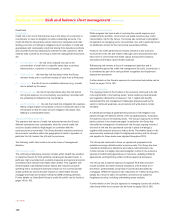 160
160 -
 161
161 -
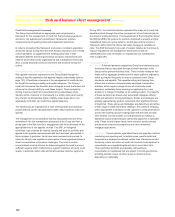 162
162 -
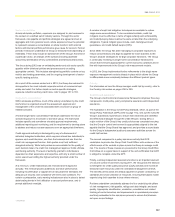 163
163 -
 164
164 -
 165
165 -
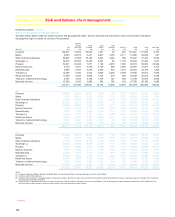 166
166 -
 167
167 -
 168
168 -
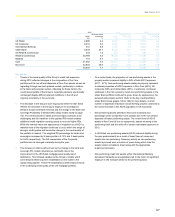 169
169 -
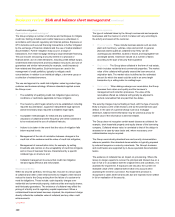 170
170 -
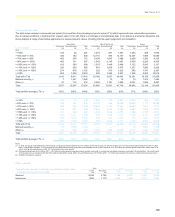 171
171 -
 172
172 -
 173
173 -
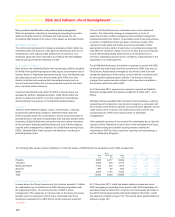 174
174 -
 175
175 -
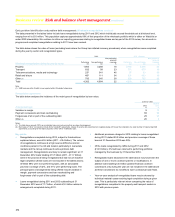 176
176 -
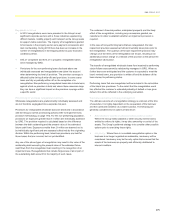 177
177 -
 178
178 -
 179
179 -
 180
180 -
 181
181 -
 182
182 -
 183
183 -
 184
184 -
 185
185 -
 186
186 -
 187
187 -
 188
188 -
 189
189 -
 190
190 -
 191
191 -
 192
192 -
 193
193 -
 194
194 -
 195
195 -
 196
196 -
 197
197 -
 198
198 -
 199
199 -
 200
200 -
 201
201 -
 202
202 -
 203
203 -
 204
204 -
 205
205 -
 206
206 -
 207
207 -
 208
208 -
 209
209 -
 210
210 -
 211
211 -
 212
212 -
 213
213 -
 214
214 -
 215
215 -
 216
216 -
 217
217 -
 218
218 -
 219
219 -
 220
220 -
 221
221 -
 222
222 -
 223
223 -
 224
224 -
 225
225 -
 226
226 -
 227
227 -
 228
228 -
 229
229 -
 230
230 -
 231
231 -
 232
232 -
 233
233 -
 234
234 -
 235
235 -
 236
236 -
 237
237 -
 238
238 -
 239
239 -
 240
240 -
 241
241 -
 242
242 -
 243
243 -
 244
244 -
 245
245 -
 246
246 -
 247
247 -
 248
248 -
 249
249 -
 250
250 -
 251
251 -
 252
252 -
 253
253 -
 254
254 -
 255
255 -
 256
256 -
 257
257 -
 258
258 -
 259
259 -
 260
260 -
 261
261 -
 262
262 -
 263
263 -
 264
264 -
 265
265 -
 266
266 -
 267
267 -
 268
268 -
 269
269 -
 270
270 -
 271
271 -
 272
272 -
 273
273 -
 274
274 -
 275
275 -
 276
276 -
 277
277 -
 278
278 -
 279
279 -
 280
280 -
 281
281 -
 282
282 -
 283
283 -
 284
284 -
 285
285 -
 286
286 -
 287
287 -
 288
288 -
 289
289 -
 290
290 -
 291
291 -
 292
292 -
 293
293 -
 294
294 -
 295
295 -
 296
296 -
 297
297 -
 298
298 -
 299
299 -
 300
300 -
 301
301 -
 302
302 -
 303
303 -
 304
304 -
 305
305 -
 306
306 -
 307
307 -
 308
308 -
 309
309 -
 310
310 -
 311
311 -
 312
312 -
 313
313 -
 314
314 -
 315
315 -
 316
316 -
 317
317 -
 318
318 -
 319
319 -
 320
320 -
 321
321 -
 322
322 -
 323
323 -
 324
324 -
 325
325 -
 326
326 -
 327
327 -
 328
328 -
 329
329 -
 330
330 -
 331
331 -
 332
332 -
 333
333 -
 334
334 -
 335
335 -
 336
336 -
 337
337 -
 338
338 -
 339
339 -
 340
340 -
 341
341 -
 342
342 -
 343
343 -
 344
344 -
 345
345 -
 346
346 -
 347
347 -
 348
348 -
 349
349 -
 350
350 -
 351
351 -
 352
352 -
 353
353 -
 354
354 -
 355
355 -
 356
356 -
 357
357 -
 358
358 -
 359
359 -
 360
360 -
 361
361 -
 362
362 -
 363
363 -
 364
364 -
 365
365 -
 366
366 -
 367
367 -
 368
368 -
 369
369 -
 370
370 -
 371
371 -
 372
372 -
 373
373 -
 374
374 -
 375
375 -
 376
376 -
 377
377 -
 378
378 -
 379
379 -
 380
380 -
 381
381 -
 382
382 -
 383
383 -
 384
384 -
 385
385 -
 386
386 -
 387
387 -
 388
388 -
 389
389 -
 390
390 -
 391
391 -
 392
392 -
 393
393 -
 394
394 -
 395
395 -
 396
396 -
 397
397 -
 398
398 -
 399
399 -
 400
400 -
 401
401 -
 402
402 -
 403
403 -
 404
404 -
 405
405 -
 406
406 -
 407
407 -
 408
408 -
 409
409 -
 410
410 -
 411
411 -
 412
412 -
 413
413 -
 414
414 -
 415
415 -
 416
416 -
 417
417 -
 418
418 -
 419
419 -
 420
420 -
 421
421 -
 422
422 -
 423
423 -
 424
424 -
 425
425 -
 426
426 -
 427
427 -
 428
428 -
 429
429 -
 430
430 -
 431
431 -
 432
432 -
 433
433 -
 434
434 -
 435
435 -
 436
436 -
 437
437 -
 438
438 -
 439
439 -
 440
440 -
 441
441 -
 442
442 -
 443
443 -
 444
444 -
 445
445 -
 446
446 -
 447
447 -
 448
448 -
 449
449 -
 450
450 -
 451
451 -
 452
452 -
 453
453 -
 454
454 -
 455
455 -
 456
456 -
 457
457 -
 458
458 -
 459
459 -
 460
460 -
 461
461 -
 462
462 -
 463
463 -
 464
464 -
 465
465 -
 466
466 -
 467
467 -
 468
468 -
 469
469 -
 470
470 -
 471
471 -
 472
472 -
 473
473 -
 474
474 -
 475
475 -
 476
476 -
 477
477 -
 478
478 -
 479
479 -
 480
480 -
 481
481 -
 482
482 -
 483
483 -
 484
484 -
 485
485 -
 486
486 -
 487
487 -
 488
488 -
 489
489 -
 490
490 -
 491
491 -
 492
492 -
 493
493 -
 494
494 -
 495
495 -
 496
496 -
 497
497 -
 498
498 -
 499
499 -
 500
500 -
 501
501 -
 502
502 -
 503
503 -
 504
504 -
 505
505 -
 506
506 -
 507
507 -
 508
508 -
 509
509 -
 510
510 -
 511
511 -
 512
512 -
 513
513 -
 514
514 -
 515
515 -
 516
516 -
 517
517 -
 518
518 -
 519
519 -
 520
520 -
 521
521 -
 522
522 -
 523
523 -
 524
524 -
 525
525 -
 526
526 -
 527
527 -
 528
528 -
 529
529 -
 530
530 -
 531
531 -
 532
532 -
 533
533 -
 534
534 -
 535
535 -
 536
536 -
 537
537 -
 538
538 -
 539
539 -
 540
540 -
 541
541 -
 542
542 -
 543
543
 |
 |

Credit risk mitigation
Approaches and methodologies*
The Group employs a number of structures and techniques to mitigate
credit risk. Netting of debtor and creditor balances is undertaken in
accordance with relevant regulatory and internal policies. Exposure on
OTC derivative and secured financing transactions is further mitigated
by the exchange of financial collateral and the use of market standard
documentation. Further mitigation may occur in a range of
transactions, from retail mortgage lending to large wholesale financing.
This can include: structuring a security interest in a physical or
financial asset; use of credit derivatives, including credit default swaps,
credit-linked debt instruments and securitisation structures; and use of
guarantees and similar instruments (for example, credit insurance)
from related and third parties. Such techniques are used in the
management of credit portfolios, typically to mitigate credit
concentrations in relation to an individual obligor, a borrower group or
a collection of related borrowers.
The use and approach to credit risk mitigation varies by product type,
customer and business strategy. Minimum standards applied across
the Group cover:
x The suitability of qualifying credit risk mitigation types and any
conditions or restrictions applicable to those mitigants;
x The means by which legal certainty is to be established, including
required documentation, supportive independent legal opinions
and all necessary steps required to establish legal rights;
x Acceptable methodologies for initial and any subsequent
valuations of collateral and the frequency with which collateral is
to be revalued and the use of collateral haircuts;
x Actions to be taken in the event that the value of mitigation falls
below required levels;
x Management of the risk of correlation between changes in the
credit risk of the customer and the value of credit risk mitigation;
x Management of concentration risks, for example, by setting
thresholds and controls on the acceptability of credit risk mitigants
and on lines of business that are characterised by a specific
collateral type or structure; and
x Collateral management to ensure that credit risk mitigation
remains legally effective and enforceable.
Secured portfolios
Within its secured portfolios, the Group has recourse to various types
of collateral and other credit enhancements to mitigate credit risk and
reduce the loss to the Group arising from the failure of a customer to
meet its obligations. These include: cash deposits; charges over
residential and commercial property, debt securities and equity shares;
and third-party guarantees. The existence of collateral may affect the
pricing of a facility and its regulatory capital requirement. When a
collateralised financial asset becomes impaired, the impairment charge
directly reflects the realisable value of collateral and any other credit
enhancements.
Corporate exposures
The type of collateral taken by the Group’s commercial and corporate
businesses and the manner in which it is taken will vary according to
the activity and assets of the customer.
x Physical assets - These include business assets such as stock,
plant and machinery, vehicles, ships and aircraft. In general,
physical assets qualify as collateral only if they can be
unambiguously identified, located or traced, and segregated from
uncharged assets. Assets are valued on a number of bases
according to the type of security that is granted.
x Real estate - The Group takes collateral in the form of real estate,
which includes residential and commercial properties. The market
value of the collateral will typically exceed the loan amount at
origination date. The market value is defined as the estimated
amount for which the asset could be sold in an arms length
transaction by a willing seller to a willing buyer.
x Receivables - When taking a charge over receivables, the Group
assesses their nature and quality and the borrower’s
management and collection processes. The value of the
receivables offered as collateral will typically be adjusted to
exclude receivables that are past their due dates.
The security charges may be floating or fixed, with the type of security
likely to impact: (i) the credit decision; and (ii) the potential loss upon
default. In the case of a general charge such as a mortgage
debenture, balance sheet information may be used as a proxy for
market value if the information is deemed reliable.
The Group does not recognise certain asset classes as collateral: for
example, short leasehold property and equity shares of the borrowing
company. Collateral whose value is correlated to that of the obligor is
assessed on a case-by-case basis and, where necessary, over-
collateralisation may be required.
The Group uses industry-standard loan and security documentation
wherever possible. Non-standard documentation is typically prepared
by external lawyers on a case-by-case basis. The Group’s business
and credit teams are supported by in-house specialist documentation
teams.
The existence of collateral has an impact on provisioning. Where the
Group no longer expects to recover the principal and interest due on a
loan in full or in accordance with the original terms and conditions, it is
assessed for impairment. If exposures are secured, the current net
realisable value of the collateral will be taken into account when
assessing the need for a provision. No impairment provision is
recognised in cases where all amounts due are expected to be settled
in full on realisation of the security.
168
Business review Risk and balance sheet management continued
*unaudited
